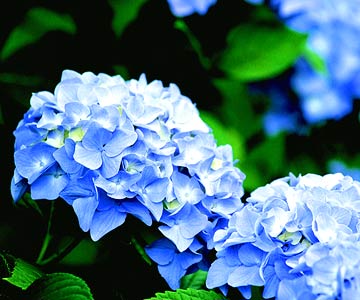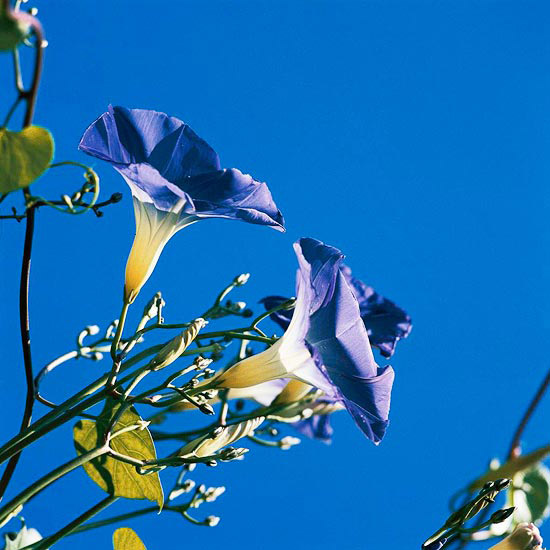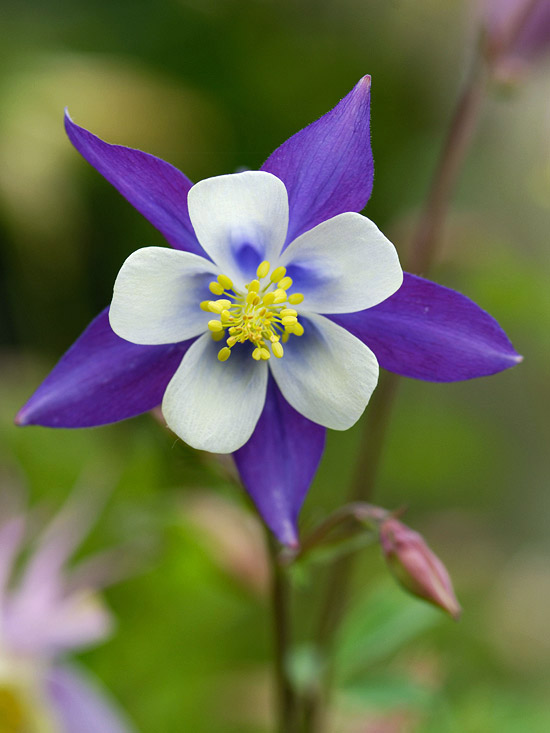






Blue's recessive quality serves as a beautiful blender for other colors and makes it appear warm or cool relative to its tint and plant companions. Cool, pale blue flowers, especially those that appear in spring, knit other colors together. For subtle, impressionistic contrasts, combine blue with its cool cousins: lavender, gray, and green.
Blue, in any hue, mingles well with pink, yellow, and its opposite: orange. Borders painted with blue, yellow, and orange or a trio of blue, red, and lime green, add pizzazz to summer landscapes. Blue has a stabilizing effect when placed near electric colors such as chartreuse, magenta, crimson, or hot pink.
The frosty blues of fall that tint ornamental kale and Russian sage interact dramatically with other autumnal colors, including deep oranges, reds, and violets.
Related Slide Show: Best Blue Flowers for Your Garden
continue reading below
As intermediary colors in the garden, blue and silver work well together, creating restful scenes where eyes can take refuge. The two colors merge in the foliage of plants such as rue, juniper, blue fescue, Rosa glauca, and Hosta sieboldiana. Blue-flower plants with silvery foliage, including lupine, baptisia, pulmonaria, mertensia, and many salvias, have a double impact on the landscape. Like silver, white clarifies blue's ambiguity. Blue-and-white combinations bond easily, creating a crisp, polished look.
It's that visual ambiguity that makes blue the perfect vehicle for conjuring illusions of depth. Placed at a border's end, or in the background, it creates an impression that the space goes on and on. If you want to connect your garden's boundaries and the surrounding landscape, blue provides a gentle blending tool. Establish a contemplative area around a fountain or garden bench by using tranquil blue flowers and foliage.
Related Feature: Bold Colors for Your Garden

Copyright © www.100flowers.win Botanic Garden All Rights Reserved